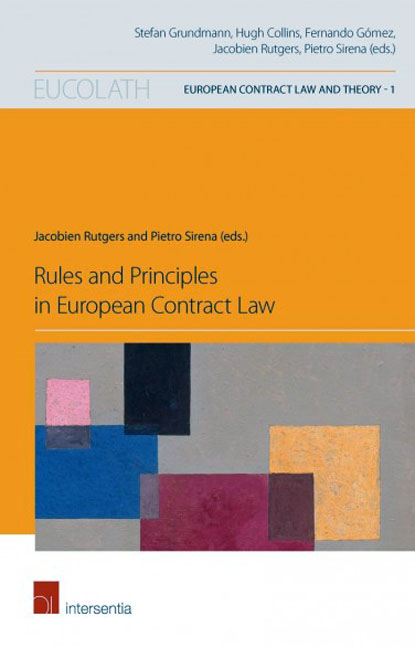Book contents
- Frontmatter
- Contents
- Table of Cases
- List of Authors
- Introduction
- Principles versus Rules in the Emerging European Contract Law
- The ECJ and General Principles Derived from the Acquis Communautaire
- The Principle of Effectiveness and EU Contract Law
- The Principle of Proportionality and European Contract Law
- ‘General Principles’ and ‘Underlying Principles’ in the Proposed Common European Sales Law and their Role in its Interpretation
- Contractual Autonomy and European Private Law
- Good Faith and Reasonableness in European Contract Law
- Benefits to the Defendant as a Measure for Relief: Toward a Specific Rule in European Contract Law?
Good Faith and Reasonableness in European Contract Law
Published online by Cambridge University Press: 28 November 2017
- Frontmatter
- Contents
- Table of Cases
- List of Authors
- Introduction
- Principles versus Rules in the Emerging European Contract Law
- The ECJ and General Principles Derived from the Acquis Communautaire
- The Principle of Effectiveness and EU Contract Law
- The Principle of Proportionality and European Contract Law
- ‘General Principles’ and ‘Underlying Principles’ in the Proposed Common European Sales Law and their Role in its Interpretation
- Contractual Autonomy and European Private Law
- Good Faith and Reasonableness in European Contract Law
- Benefits to the Defendant as a Measure for Relief: Toward a Specific Rule in European Contract Law?
Summary
THE GENERAL ISSUE
In a speech given at the 1975 Conference on ‘Europe and the unity of the law’, Alberto Trabucchi, who at that time was serving as a judge in the Luxembourg Court, referred to good faith as one of the general principles likely to be applied by the Court of Justice.
Five years on, the Vienna Convention on the contracts for the international sale of goods gave a prominent role to reasonableness alongside good faith.
Since then, the use of good faith and of reasonableness3 has spread relentlessly throughout European contract law: from the Directives to the harmonisation projects and the DCFR, up to the recent Proposal for a Regulation on a Common European Sales Law.
Their success, which has rapidly overshadowed twentieth-century critiques and concerns about the perils of a Flucht in die Generalklauseln, is mainly based on the politics of harmonisation.
European harmonisation enjoys rules that can easily be shared, due to their undetailed content and ubiquity in most European legal systems. On the other hand, the flexibility of the general clauses and standards satisfies the quest for uniform criteria as well as the need to preserve ‘national and regional differences’. Finally, the room which is left to the judge is common law, grounded in the authority of the precedent.
But why, then, choose to rely on the principles of good faith and reasonableness?
The answers to this question prompt our inquiry to move to the wider ground of legislative policy and technical legal reasons.
The success of the principle of good faith lies within a context of radical institutional changes and hints at the influence of several schools of thought. In the politics of the European Union the role of the market has gradually replaced the traditional statist organisation, characterised by a sharp division between the quest for social justice, left to the interventionism of the State into the domestic economy, and the regulation of private transactions and contracts, inspired by a laissez-faire approach to political economics.
- Type
- Chapter
- Information
- Rules and Principles in European Contract Law , pp. 135 - 150Publisher: IntersentiaPrint publication year: 2015



